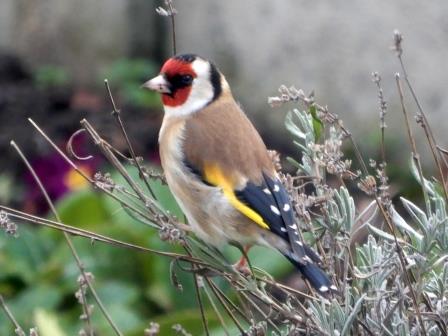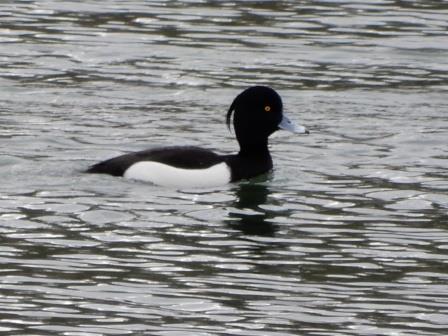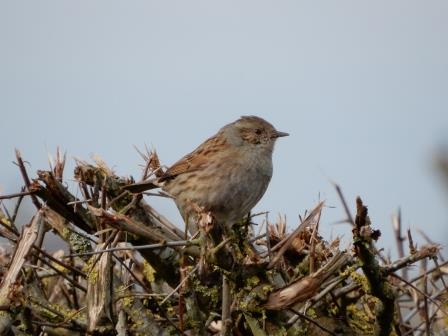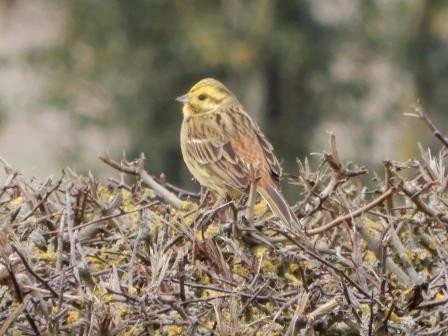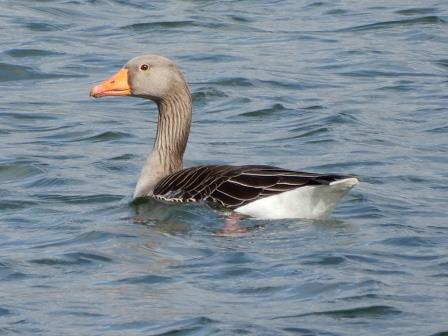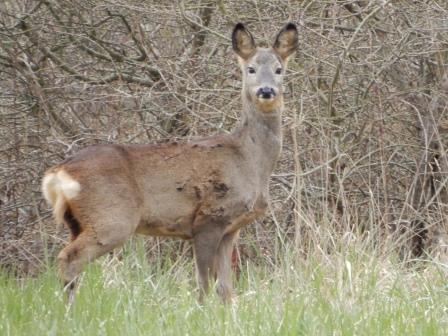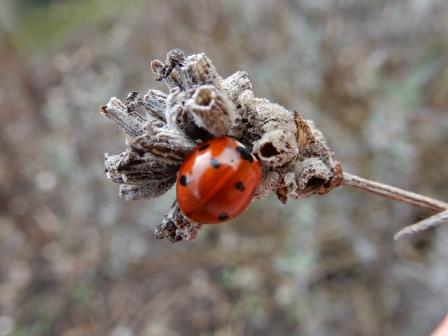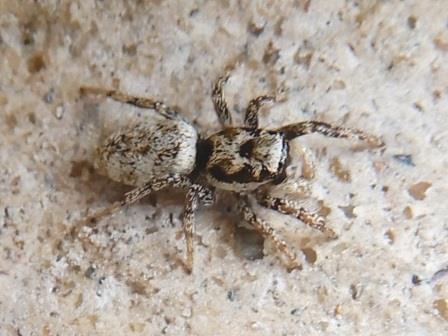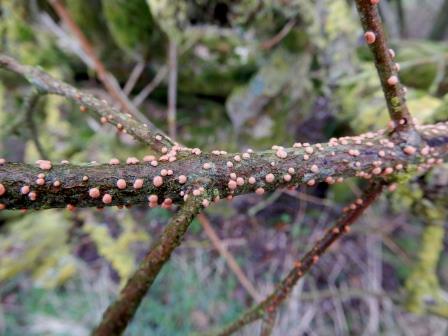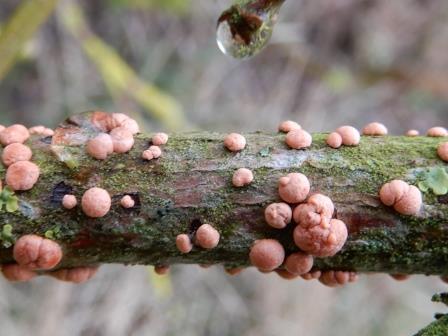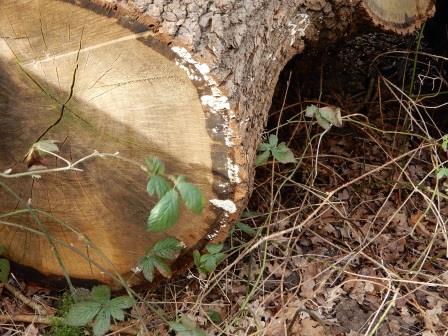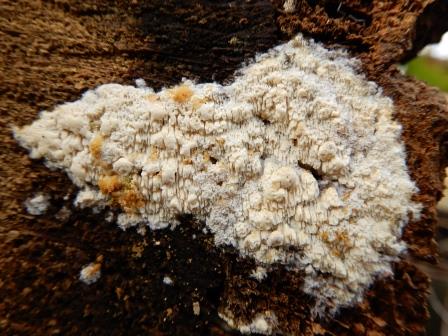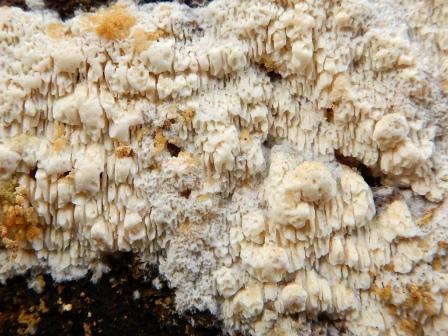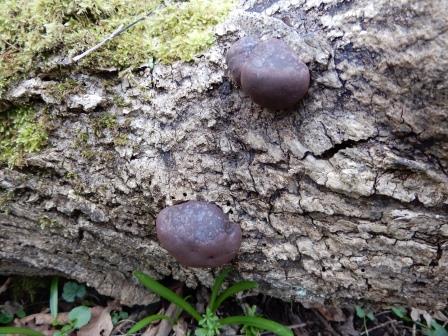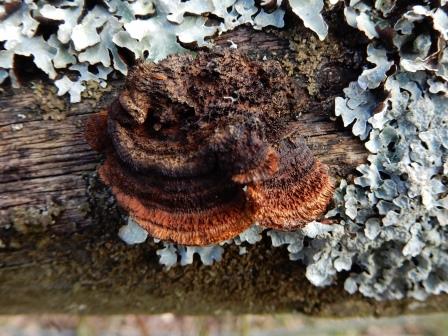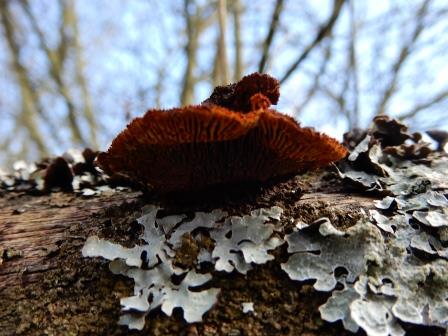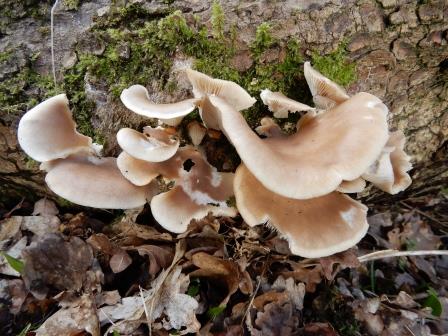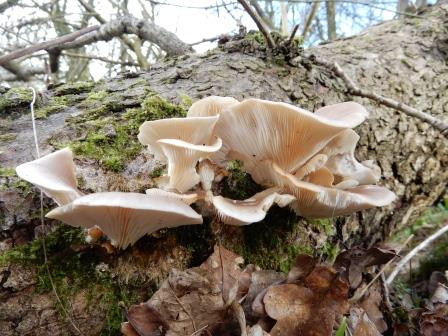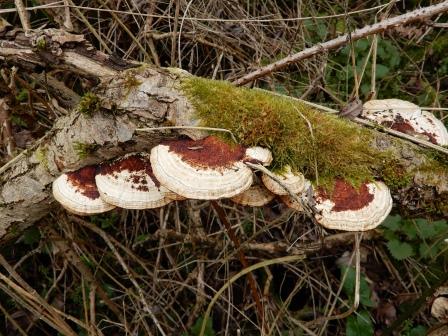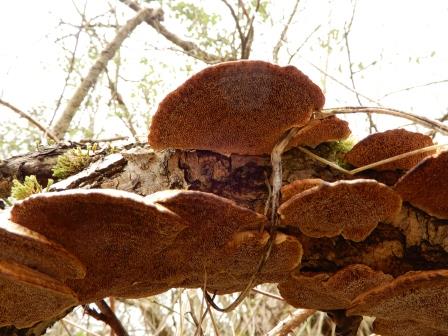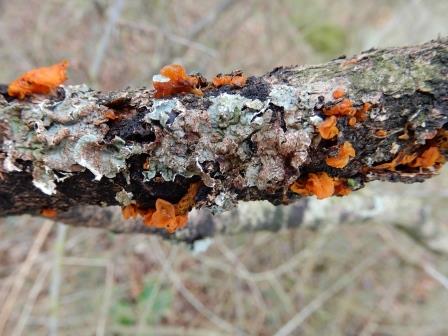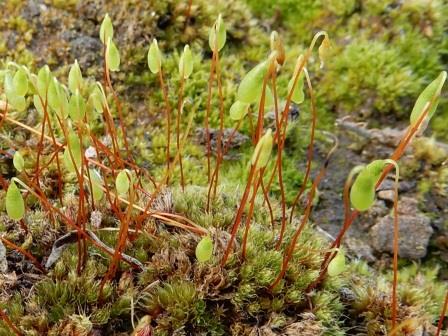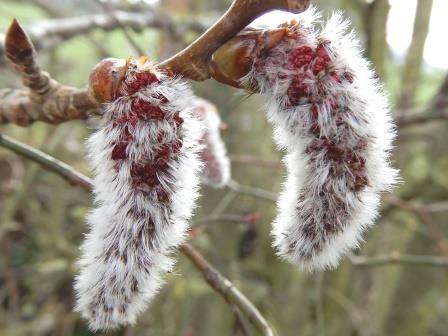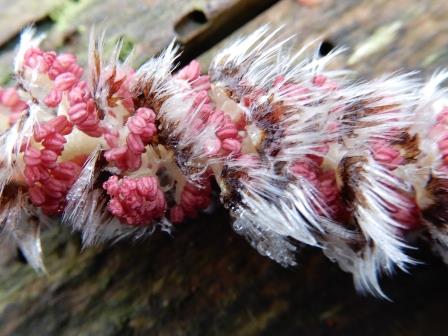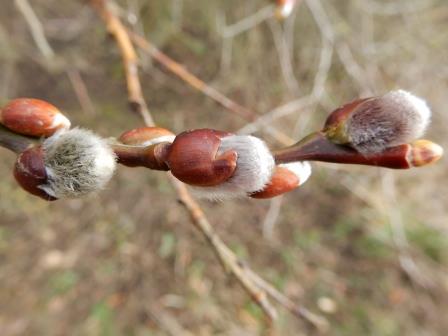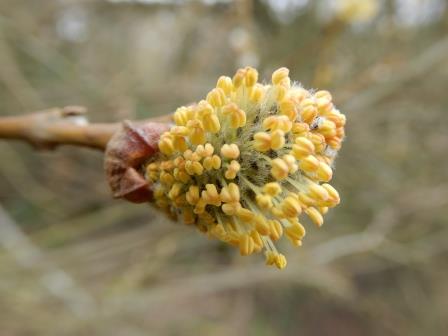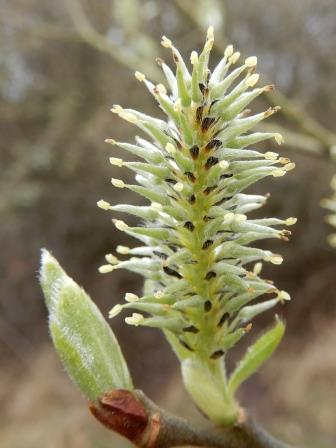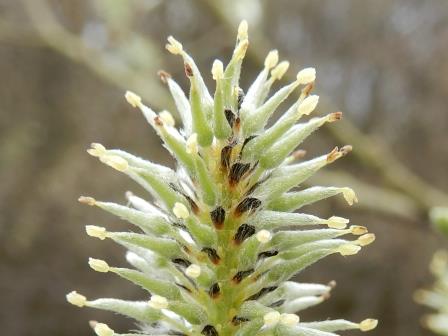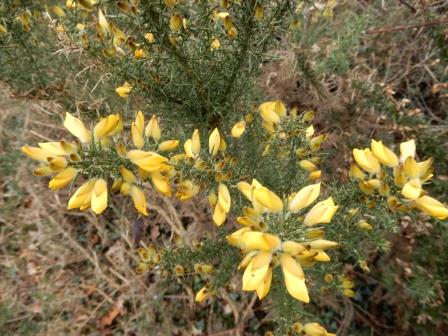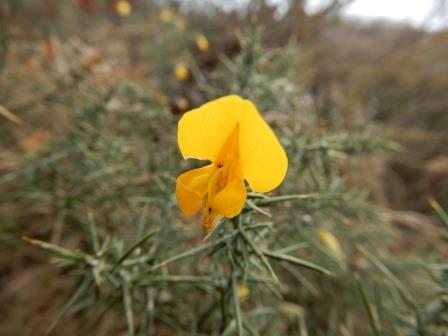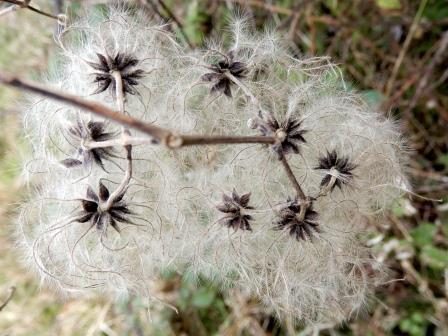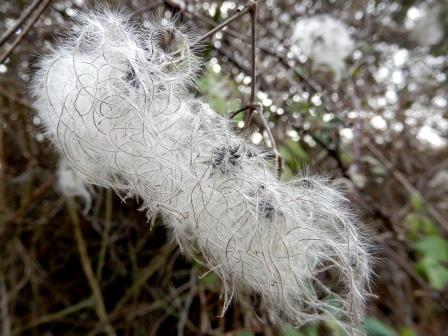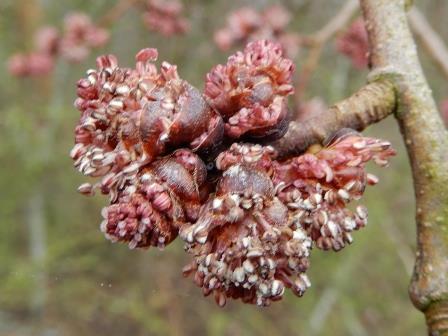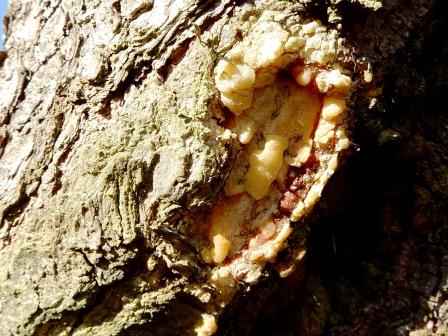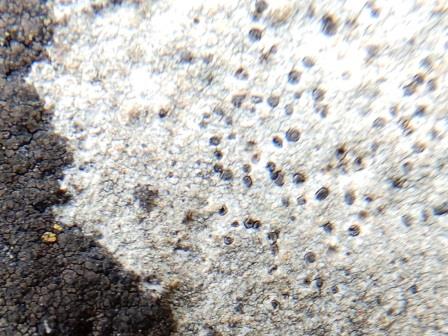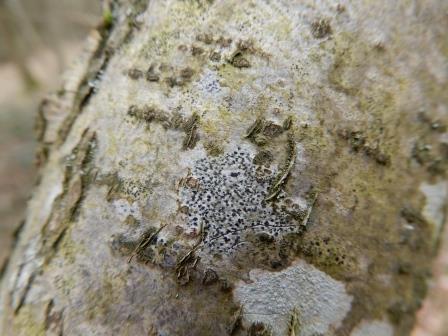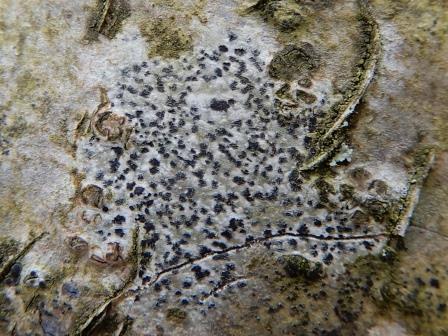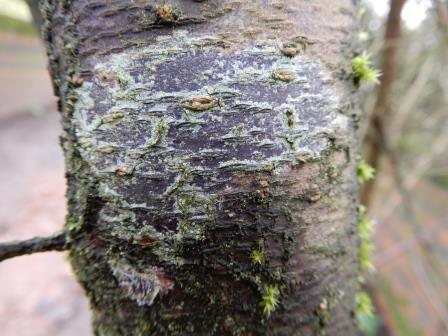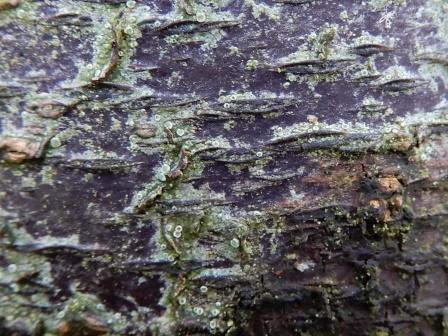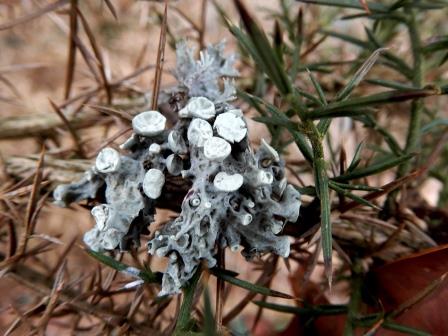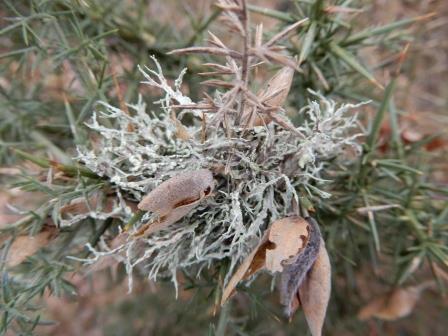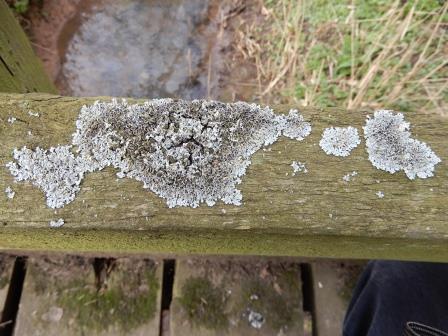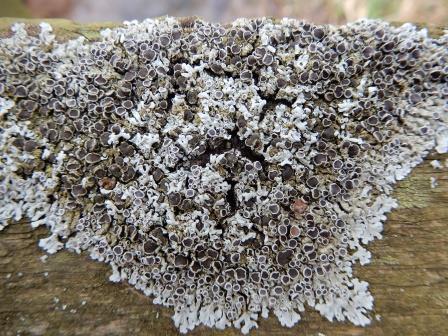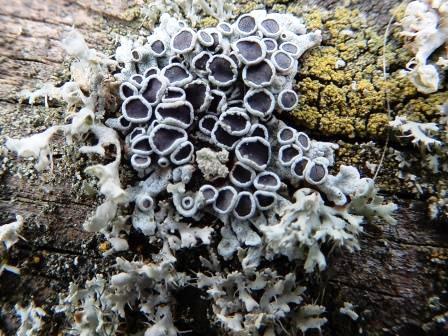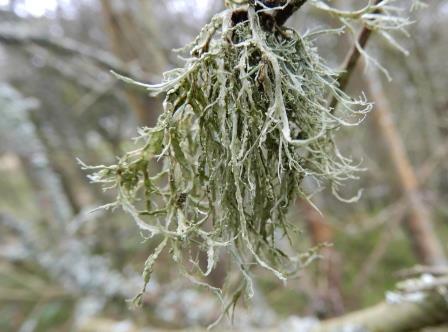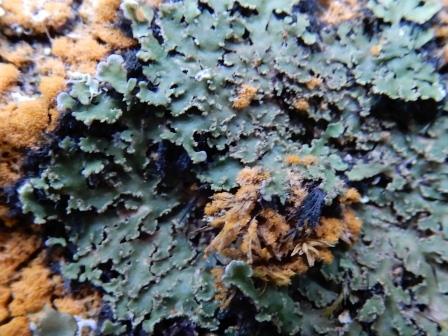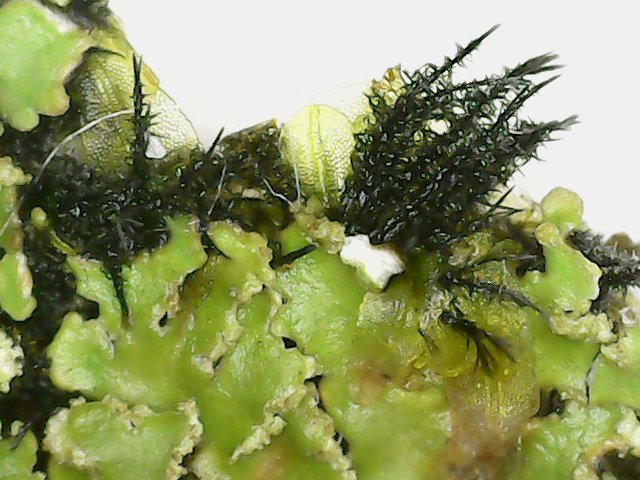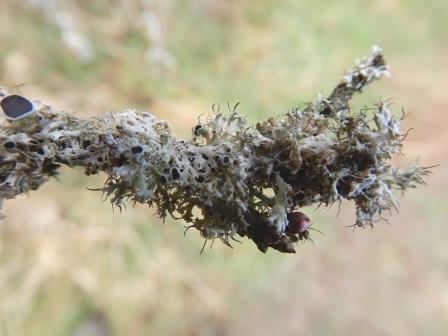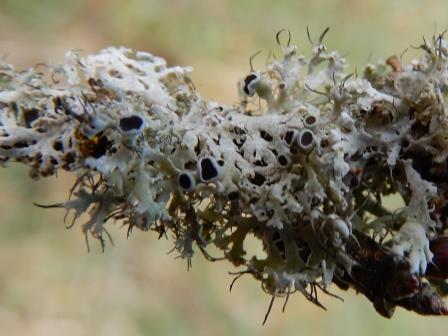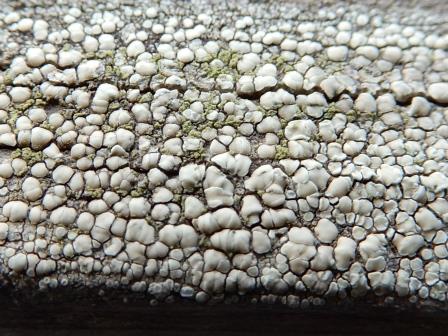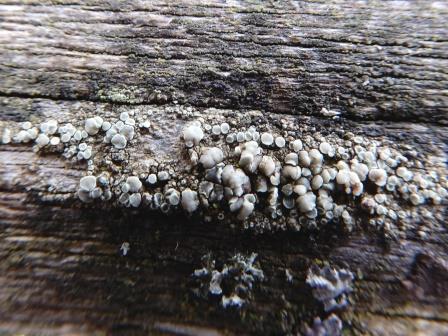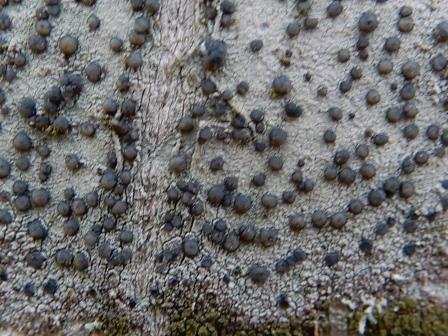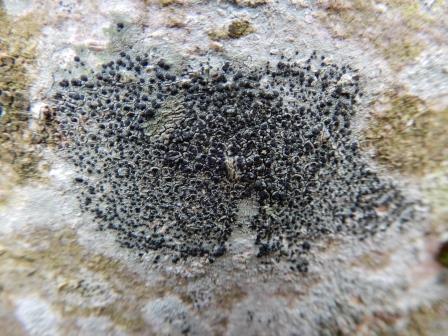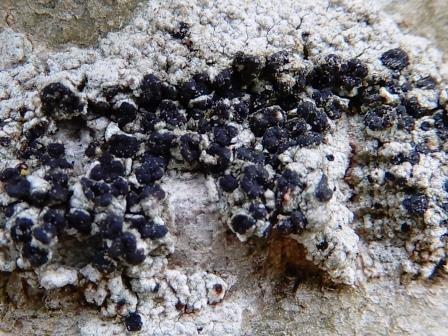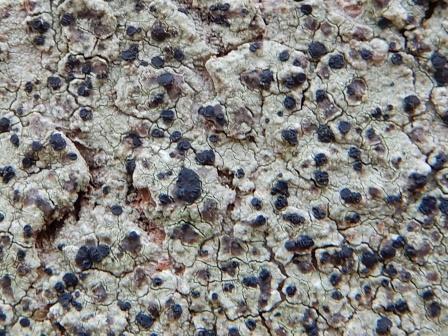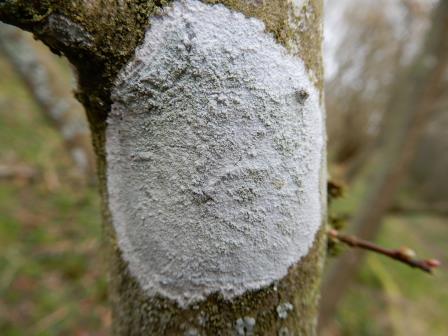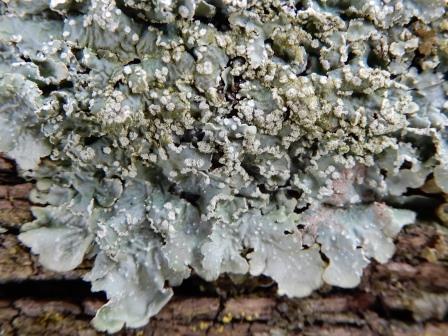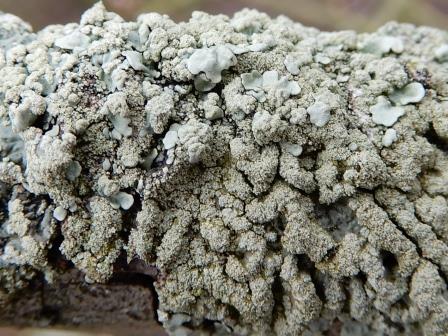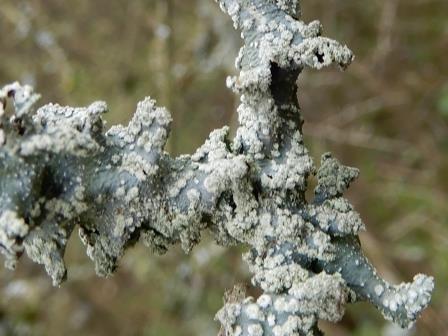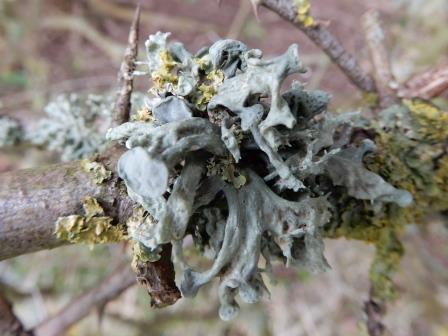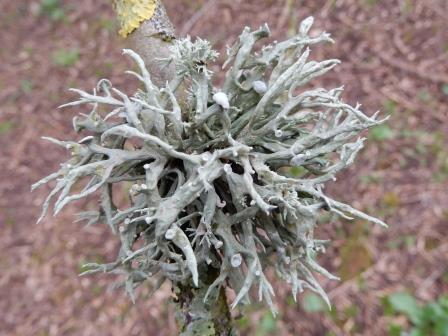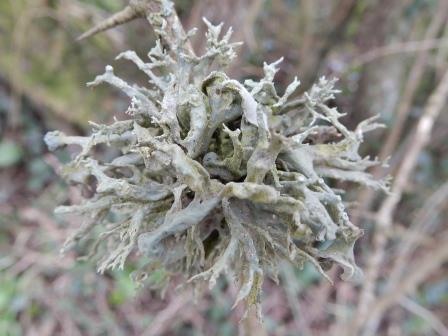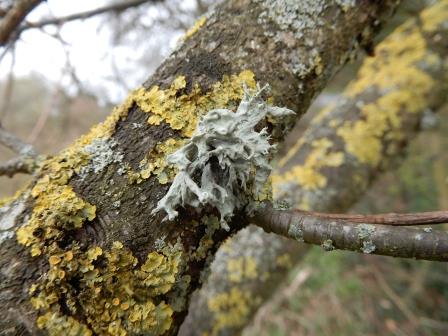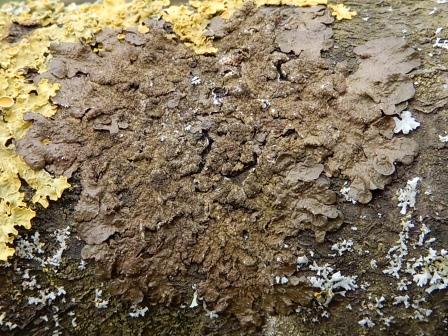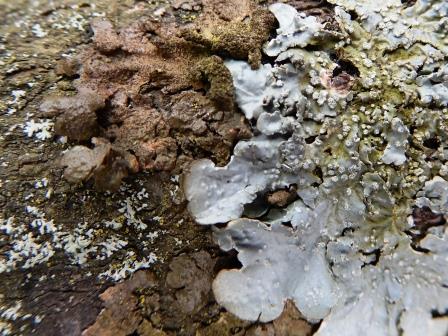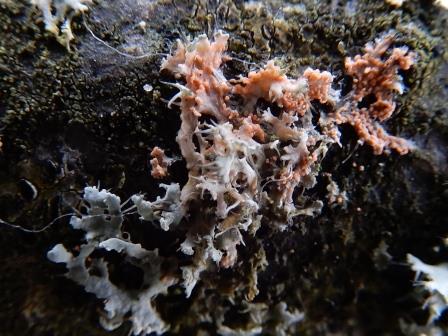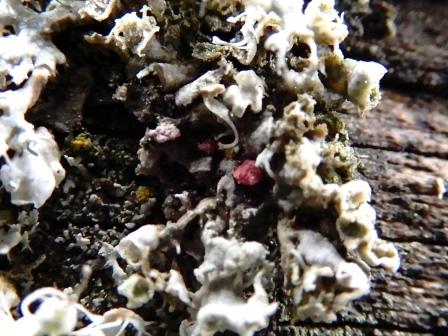Please refer to the Introduction Page to understand the context behind the monthly photographs.
Seven-Spot Ladybird on underside of Lavender seed head
The Zebra spider is only 6mm in body length and one of the jumping spiders. They act like a cat, stalking their prey and when close enough jump forward and grab the prey. I only spotted this one when it moved quickly across the stone face.
Zebra Spider (Salticus senicus)
Coral Spot (Nectria cinnabarina)
Coral Spot (Nectria cinnabarina) Close up
Split porecrust (Schizopora paradoxa)
Split porecrust (Schizopora paradoxa) Close up 1
Split porecrust (Schizopora paradoxa) Close up 2
King Alfred Cakes
(Daldinia concentriica)
Conifer Mazegill (Gloeophyllum sepiarium)
Conifer Mazegill (Gloeophyllum sepiarium)
Oyster Mushroom (Pleurotus ostreatus)
Oyster Mushroom (Pleurotus ostreatus)
Blushing Bracket (Daedaleopsis confragosa)
Blushing Bracket (Daedaleopsis confragosa)
Yellow Brain Fungus once again
Capillary Thread Moss (Bryum capillare)
Poplar tree male catkins grow up to approximately 75mm long. The poplar tree is dioecious where male and female catkins are on separate trees. See January post for the early developing catkins.
Alder Catkins blown from the tree - Close up
Goat willow (Salix caprea) - also dioecious ( separate male and female trees). The Male catkins are clad in golden stamens while the female catkins are spiky and green. Both secrete nectar – key energy for bees and butterflies in early spring.
Goat Willow Catkins (emerging)
Female Goat Willow Catkin
Female Goat Willow Catkins - close up
Common gorse is a large shrub and a member of the pea family.
I have often ignored these Clematis vitalba seed pods but close up they are rather nice.
Clematis vitalba seed pods
Clematis vitalba seed pods
Maple tree emerging blossom
Pine tree bark injury with solidified sap deposit
Lichen are only recorded at each new OS Grid location (hover for Grid Ref). They are then entered on the British Lichen Society spreadsheet and submitted for their Warwickshire VC38 Lichen database and Lichen mapping.
Churchyard lichens - The Church of St James - Weethley
Lias ashlar with limestone dressings and tile roof built in 1857 late C13 style.
Unverified possible Verrucaria hochstetteri (needs microscope examination)
Arthonia radiata - Close up
Lecanora chlarotera - Close up
Ramalina fastigiata growing on a Gorse Bush
Ramalina farinacea on Gorse Bush
Physcia aipolia - Close up
Physcia aipolia (Different location)
Physconia enteroxantha - Close up digital microscope
Physcia tenella - Close up
Lecanora polytropa (Different location)
Lecidella elaeochroma (Different location)
Lecidella elaeochroma (Another different location)
Lecidella elaeochroma (Different location)
Punctelia subrudecta (Different location)
Punctelia subrudecta (Another location)
Ramalina fastigiata (Different location)
Ramalina fastigiata (Another location)
Ramalina fastigiata (Different location)
Melanelixia subaurifera & Punctelia subrudecta
A lichenicolous fungus is a parasitic fungus that only lives on lichen.
Erythricium aurantiacum on Physcia tenella
Illosporiopsis christiansenii on Physcia tenella
Ones that escaped the camera lens this month
a) A solitary Muntjac Deer on two ocassions but very quick to move.
b) Reed Bunting photograph to poor to post.
c) Green Woodpecker.
d) A Lapwing - aerial soaring and diving display.
e) A hare - but far to quick to photograph.
f) Yellow Brimstone & Peacock Butterflies.
Page Views starting March 2022: 568
